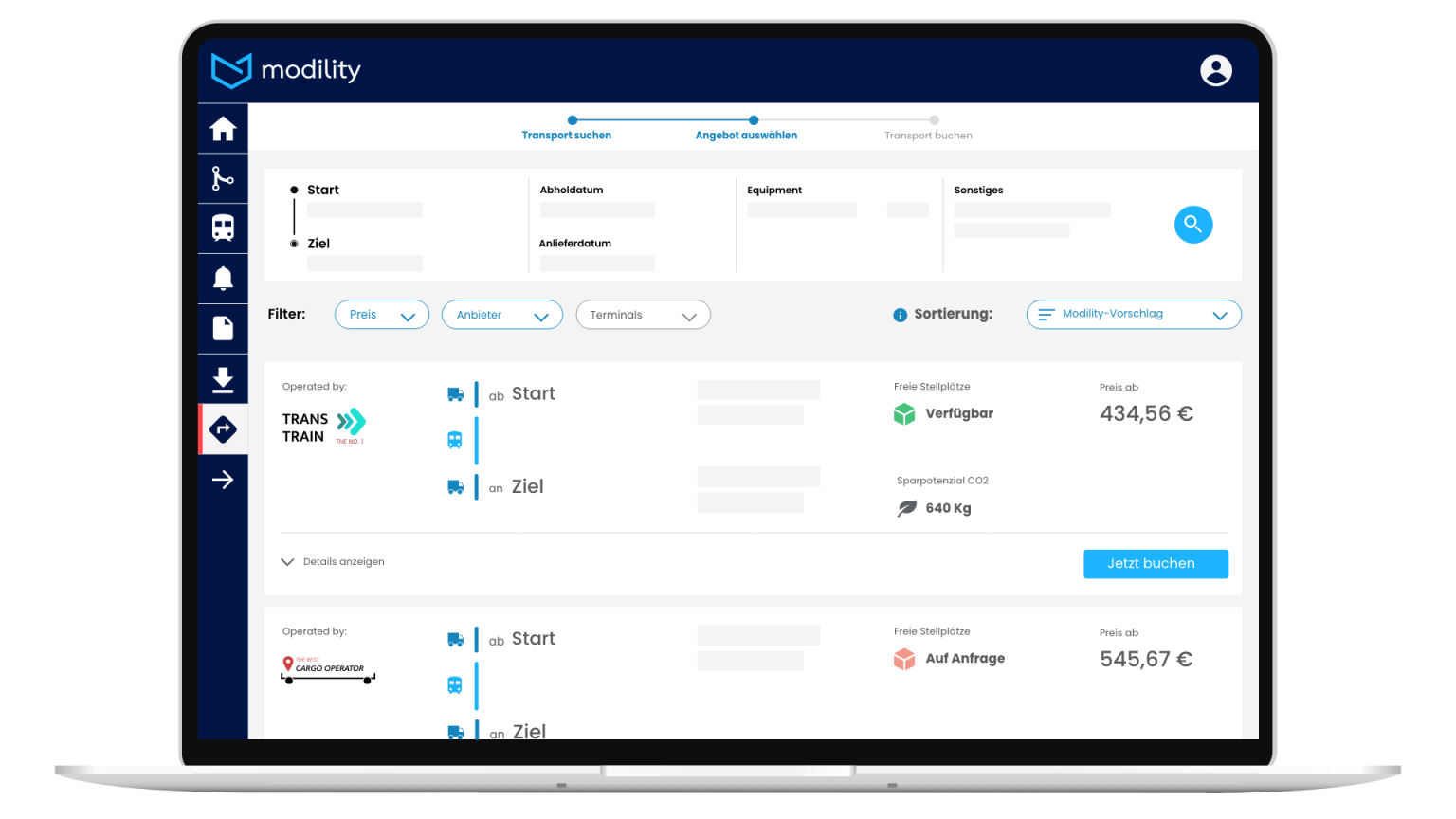Modility ist von der Bundesvereinigung Logistik (BVL) als Finalist beim Deutschen Logistik-Preis 2023 ausgezeichnet worden! 🎉 –> Learn more
Modility ist von der Bundesvereinigung Logistik (BVL) als Finalist beim Deutschen Logistik-Preis 2023 ausgezeichnet worden! 🎉 –> Learn more
A Combined Transport combines the flexibility of trucking with the efficiency of rail.

of rail

of trucking
Combined transport (CT) is a special type of freight transport that combines several modes of transport for one shipment.
The loading units (containers, swap bodies or semi-trailers) are transported over longer distances by rail or waterway. The truck is only used on the shortest possible route to cover the first and last mile.
Seaport hinterland transportation is the inbound and outbound carriage of goods between seaports and the surrounding hinterland, usually using standard ISO containers.
67 %
Share of Combined Transport via Rail

Continental traffic includes freight transport within the same continent, where containers, swap bodies or semi-trailers are transported by rail in the main run.
33 %
Share of Combined Transport via Rail

Seaport hinterland transportation is the inbound and outbound carriage of goods between seaports and the surrounding hinterland, usually using standard ISO containers.
67 %
Share of Combined Transport via Rail

Continental traffic includes freight transport within the same continent, where containers, swap bodies or semi-trailers are transported by rail in the main run.
33 %
Share of Combined Transport via Rail

You can find a useful overview on the idea and how CT works at the Association for Combined Transport (SGKV).
Trucks may carry a maximum total weight of 44 tons in the pre- or on-carriage leg of a Combined Transport, which is 4 tons more than in road-only freight transport. This means that up to one in eleven truck journeys is saved.
Rail is not only efficient, but also sustainable. Door-to-door CT by rail can save up to 80 percent of CO2 emissions compared with road-only transportation. The longer the main leg distance, the greater the savings potential.
No vehicle tax, less truck toll and lower fuel consumption. At a distance of 600 kilometers, CT is already cheaper than road transport for four out of five connections when including external costs. Above 1,000 kilometers, the ratio is almost 95 percent.
CT means that resources can be used even more efficiently, because personnel and vehicles are less likely to be tied up on long truck journeys across Europe. Instead, they can be used flexibly for pre- and on-carriage to the next CT terminal as well as for other transport services.
Für viele Spediteure und ihre Kunden ist der KV eine attraktive Lkw-Alternative. Sie würden die Vorteile gerne nutzen und buchen.
They lack a one-stop shop for information on providers, routes, prices and available capacity.

Language